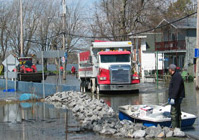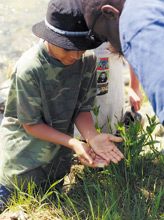What is watershed education?
In the Champlain Basin Education Initiative our approach to watershed education is founded on two beliefs:
Using one’s watershed is an exciting, powerful, and straightforward way to center learning in a local place. It links learning to the land and water nearby and invites us to consider our impact locally as well as the importance of water universally.
When studying a watershed, learning is framed by the natural boundaries that are defined by the flow of water on the landscape. Through watershed education, students can learn about ecosystems, interdependence, and human impact.
 These days—as our access to clean water and a livable climate becomes more acute and questions about water are as pertinent in a large urban space as they are in a wooded river basin—watershed education can embrace a wider view that looks at larger issues of equity and social justice. Students can become involved in solving real problems as they grapple with the complexities of local places.
These days—as our access to clean water and a livable climate becomes more acute and questions about water are as pertinent in a large urban space as they are in a wooded river basin—watershed education can embrace a wider view that looks at larger issues of equity and social justice. Students can become involved in solving real problems as they grapple with the complexities of local places.
Watershed education is a process of being intentional about designing curriculum that provides opportunity for content acquisition, skills, and civic engagement with the questions that we have about our environment.
- Is this water safe to drink?
- Is everyone’s house built in a safe place?
- How do my actions affect others?
- What is a sustainable way to live?
 With these questions we are working towards a new vision of stewardship—a vision that acknowledges both the individual and collective impact we have on our land and water. As students come to understand more critical issues such as climate change, food security, and sustainable practices, they are more likely to become active agents in their communities.
With these questions we are working towards a new vision of stewardship—a vision that acknowledges both the individual and collective impact we have on our land and water. As students come to understand more critical issues such as climate change, food security, and sustainable practices, they are more likely to become active agents in their communities.

